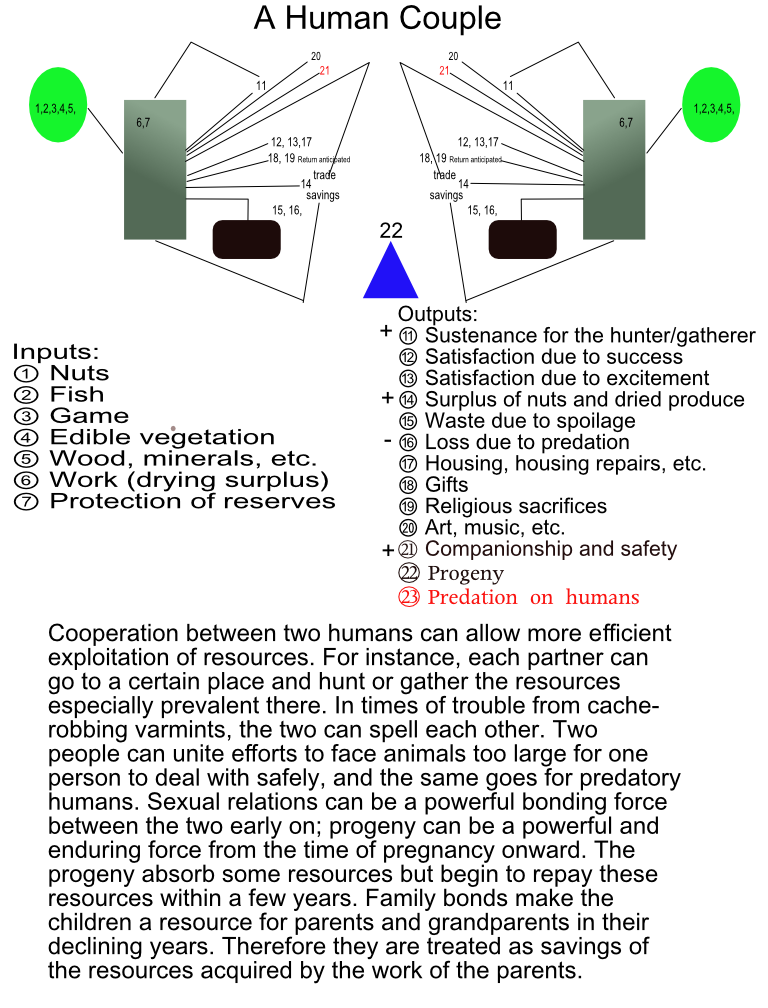Two Humans in a Partnership
Even before the first human being took on a dog as partner, humans were
forming couples. When two human being cooperate they may simply
add their efforts, as when two people cooperate to lift a log, or they
may divide their energies in complementary directions. For instance,
one member of the pair may collect a large volume of fruit or berries
while the other is hunting for antelope. The result may well be more
than they both can eat, so they can dry the surplus of each acquisition
and put it in storage in a secure, dry place. If they were to acquire a
dog they would have economical help in hunting and guarding, and if
they were to acquire a cat they would have cost effective help in
protecting collected nuts, dried fruit, smoked meat, etc.


It is easy to see that in many different ways a pair of individuals
doing the daily tasks of hunting and gathering could be more than twice
as effective as either one of them alone. There are also benefits in
times of injury of ill health. Success in these fundamental tasks will
easily lead to increases in material savings, and the possibility of
taking turns in guarding their savings cache will improve their
long-term retention of the advantages they have created for themselves.
Companionship and the opportunity to have someone to communicate with,
to plan together with, etc. are obvious benefits to such an
arrangement. It is also clear that in times of danger these people can
take different watches through the night and do other things to
increase their mutual security.
A third outcome of such a partnership can be progeny. In many ways this
outcome is more than the addition of an economic benefit or the
addition of a focus of joy and affection; it is a form of saving. The
lore and knowledge of the hunter-gatherers is bestowed upon the
upcoming generations. Parents and grandparents will in turn be aided by
children and grandchildren.
[To the previous essay] [To the next essay]
